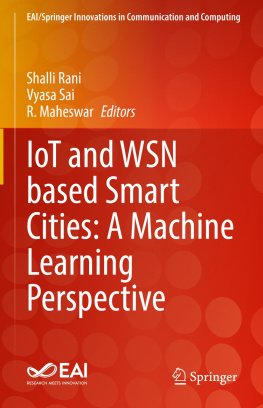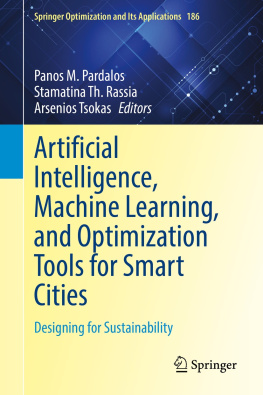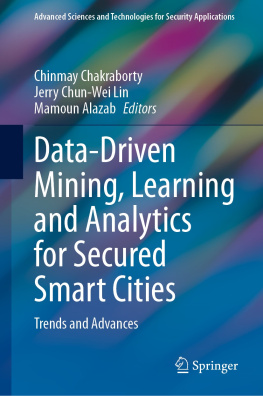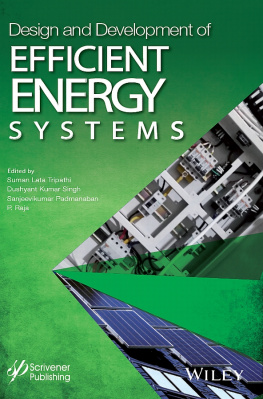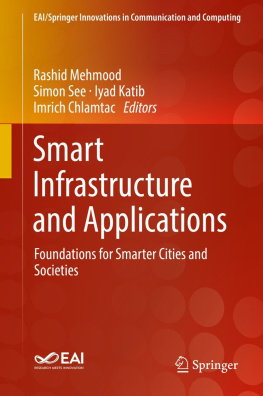EAI/Springer Innovations in Communication and Computing
Series Editor
Imrich Chlamtac
European Alliance for Innovation, Ghent, Belgium
Editors Note
The impact of information technologies is creating a new world yet not fully understood. The extent and speed of economic, life style and social changes already perceived in everyday life is hard to estimate without understanding the technological driving forces behind it. This series presents contributed volumes featuring the latest research and development in the various information engineering technologies that play a key role in this process.
The range of topics, focusing primarily on communications and computing engineering include, but are not limited to, wireless networks; mobile communication; design and learning; gaming; interaction; e-health and pervasive healthcare; energy management; smart grids; internet of things; cognitive radio networks; computation; cloud computing; ubiquitous connectivity, and in mode general smart living, smart cities, Internet of Things and more. The series publishes a combination of expanded papers selected from hosted and sponsored European Alliance for Innovation (EAI) conferences that present cutting edge, global research as well as provide new perspectives on traditional related engineering fields. This content, complemented with open calls for contribution of book titles and individual chapters, together maintain Springers and EAIs high standards of academic excellence. The audience for the books consists of researchers, industry professionals, advanced level students as well as practitioners in related fields of activity include information and communication specialists, security experts, economists, urban planners, doctors, and in general representatives in all those walks of life affected ad contributing to the information revolution.
Indexing: This series is indexed in Scopus, Ei Compendex, and zbMATH.
About EAI
EAI is a grassroots member organization initiated through cooperation between businesses, public, private and government organizations to address the global challenges of Europes future competitiveness and link the European Research community with its counterparts around the globe. EAI reaches out to hundreds of thousands of individual subscribers on all continents and collaborates with an institutional member base including Fortune 500 companies, government organizations, and educational institutions, provide a free research and innovation platform.
Through its open free membership model EAI promotes a new research and innovation culture based on collaboration, connectivity and recognition of excellence by community.
Editors
Shalli Rani , Vyasa Sai and R. Maheswar
IoT and WSN based Smart Cities: A Machine Learning Perspective

Logo of the publisher

Logo of the publisher
Editors
Shalli Rani
Chitkara University Institute of Engineering and Technology, Chitkara University, Rajpura, Punjab, India
Vyasa Sai
Intel Corporation, Folsom, CA, USA
R. Maheswar
Department of ECE, KPR Institute of Engineering and Technology, Coimbatore, India
ISSN 2522-8595 e-ISSN 2522-8609
EAI/Springer Innovations in Communication and Computing
ISBN 978-3-030-84181-2 e-ISBN 978-3-030-84182-9
https://doi.org/10.1007/978-3-030-84182-9
The Editor(s) (if applicable) and The Author(s), under exclusive license to Springer Nature Switzerland AG 2022
This work is subject to copyright. All rights are solely and exclusively licensed by the Publisher, whether the whole or part of the material is concerned, specifically the rights of translation, reprinting, reuse of illustrations, recitation, broadcasting, reproduction on microfilms or in any other physical way, and transmission or information storage and retrieval, electronic adaptation, computer software, or by similar or dissimilar methodology now known or hereafter developed.
The use of general descriptive names, registered names, trademarks, service marks, etc. in this publication does not imply, even in the absence of a specific statement, that such names are exempt from the relevant protective laws and regulations and therefore free for general use.
The publisher, the authors and the editors are safe to assume that the advice and information in this book are believed to be true and accurate at the date of publication. Neither the publisher nor the authors or the editors give a warranty, expressed or implied, with respect to the material contained herein or for any errors or omissions that may have been made. The publisher remains neutral with regard to jurisdictional claims in published maps and institutional affiliations.
This Springer imprint is published by the registered company Springer Nature Switzerland AG
The registered company address is: Gewerbestrasse 11, 6330 Cham, Switzerland
Preface
In the last decade, wireless sensor networks (WSNs) have covered an extensive range of applications in various areas, such as smart healthcare, smart industry, cloud-based applications, smart home scenarios, smart monitoring, and many other domains. The Internet of Things (IoT) has ensured the smart life via communications among objects, people, and devices. However when WSNs became the integral part of the Internet, the careful investigation of the design challenges in this area raised the new research directions.
The Internet of things (IoT) has changed the living scenarios in various ways. It has introduced connectivity among various objects such as transportation vehicles, portable devices, human beings, and buildings. It has changed the way of working by making cities smart, where data is available in the cloud. By due time, trillions of devices will be connected and all things/objects will be able to communicate remotely. IoT is being supported in both public and private networks where machine learning plays a huge role. Many research projects are being sanctioned by governments in India and other countries in the machine learning processes on IoT-WSN. In the upcoming times, this domain will have huge impact on society. Remote communication with the help of sensors and connectivity through IoT with ML analysis will become an integral part of daily activities.
Various categories of applications along with driving forces of the smart city phenomenon have increased the concerns of researchers. The contributing authors are expected to provide the insights into technologies used in IoT and WSN with data mining/machine learning. Smart cities framework is a people-centric system which revolves around real time applications and infrastructures. It requires the close integration of cyber and physical components for monitoring, understanding, and controlling the smart environment.
The editors have investigated in a top-down manner the driving forces in smart cities, by incorporating principal factors including smart monitoring, public protection and strategic concerns, and science, technology, and Innovation. Important areas and issues with roadblocks to implementation, use case scenarios, novel ideas and opportunities, and other factors leading to the development of practical scenarios for smart monitoring are discussed. The book has also focused on new algorithms, architectures, and platforms which can accelerate the growth of smart city concepts. Moreover, it has detailed about the set of real-world applications and case studies related to specific smart city infrastructures, huge data management, and prediction techniques by machine learning with privacy and security issues.

